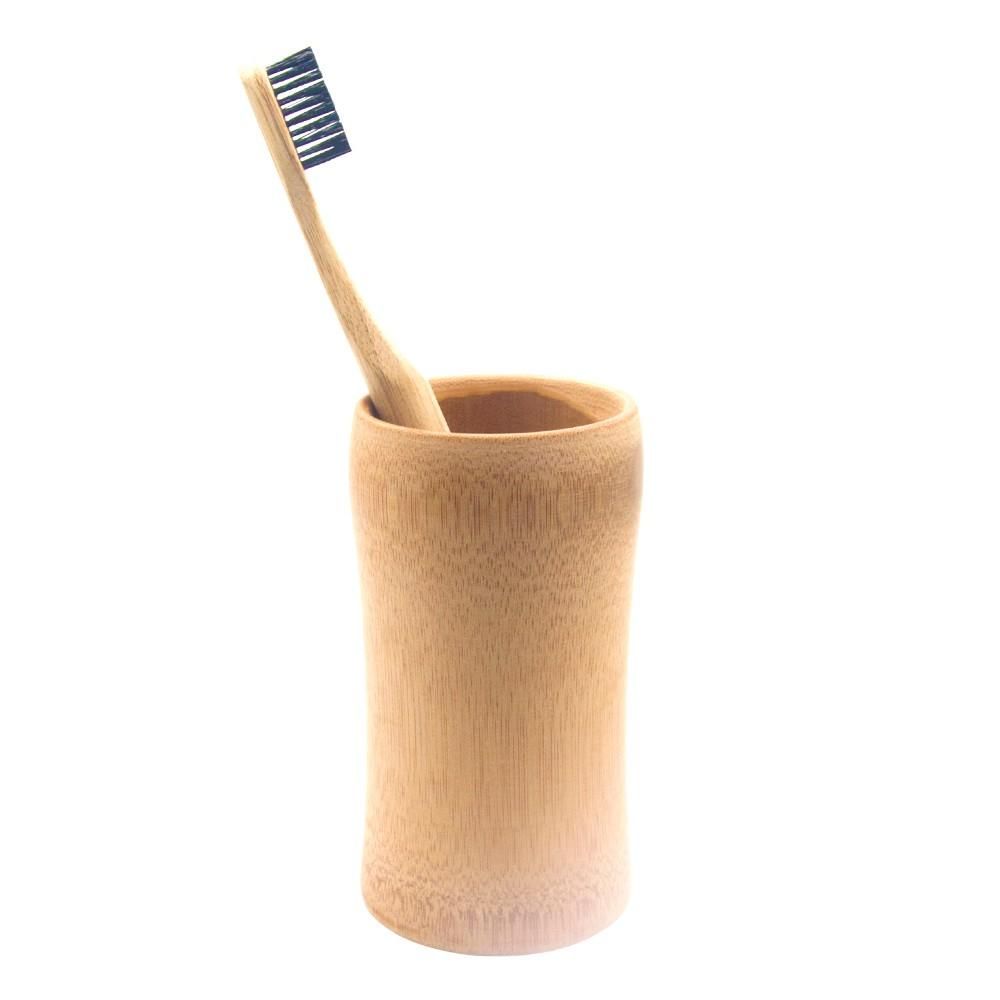- Toothbrushes must be kept clean in order to end plaque and keep teeth and gums healthy. Toothbrush preservation is essential for maintaining oral hygiene.
- Using a toothbrush cup/holder built for this purpose is the best method to store your toothbrush. Use no random household objects such as plastic bags, toilet paper, or foil. Toothbrush holders will include air holes. To allow for appropriate drying and will not injure the bristles as makeshift covers may.
- Clean your toothbrush and toothbrush holder on a regular basis. Cleaning them on a regular basis will rid your things of dust, bacteria, and dried toothpaste. Depending on the holder, you may put it in the dishwasher, apply sanitizing wipes, or wash it with soap and water.
- Remember that keeping your toothbrush clean is beneficial to your dental health. The cleanest method to store your toothbrush is on a holder. It enables airflow to dry the toothbrush. It will not be contaminated by germs from the restroom. Keeping your toothbrush clean, storing it, and cleaning your toothbrush holder. It will assist to avoid bacteria accumulation and will not harm the bristles.
- Maintain a safe distance between your toothbrush holder and the toilet and sink. Did you know that flushing the toilet may produce an aerosol that sprays germs into the air? Although closing the toilet lid can assist. Keeping toothbrushes as far away from the toilet. Will help decrease the quantity of bacteria that may settle on them.
- Keeping toothbrushes away from the sink might also help to keep them clean. When you wash your toothbrushes in the sink, water, soap, and germs can get on them. Find a nice location that is away from the toilet and as far away from splashing water as possible.
The most terrifying creature in your home isn’t hiding under your bed. It isn’t hiding in your basement. It hasn’t even infiltrated your toilet bowl. Inside your toothbrush cup, it’s becoming bigger by the day. And it’s past time for us to slay it.
According to a 2011 NSF International research. The toothbrush holder is the third germiest spot in the home. With more coliforms than your bathroom handles! Consider that. The cup that carries your toothbrush has more germs than the handles on your bathroom. The only locations in your home with more germs, according to the study. Are the kitchen sink and the dish sponge you should have thrown away a month ago.
You already know that you should change your toothbrush every three months. Many individuals overlook the necessity of keeping their toothbrush holder clean. Furthermore, many people are unsure of how to clean their toothbrush holder.
The toothbrush is still wet when you put it back in its holder after brushing your teeth. This liquid flows down the toothbrush handle. Accumulating germs, and pools in the bottom of the toothbrush holder. Resulting in a filthy and germ-filled toothbrush holder.
Bathrooms are moist, providing ideal circumstances for the development of germs and microorganisms. This implies that your toothbrush holder operate as a breeding ground for germs. Germs will crawl up your toothbrush if you do not clean your toothbrush holder. This implies that every time you clean your teeth. You are holding a germ-infested toothbrush in your hand. If you do not wash your hands afterward (which the majority of people do). You will send these germs throughout your home.
The good news is that the slimy monster residing in your toothbrush holder can be beaten. Education, elbow grease, proper cleaning weapons, and regular maintenance.
When cleaning something with stuck-on residue, grease, filth, or clear muck. We must first scrape, strip, and remove the residue. Even after being sanitized in the dishwasher. Residue can harbor germs, viruses, and coliforms (think Salmonella and E. coli). Toothbrush holders (particularly “cup-style” holders) are cavernous and difficult to clean. Toothpaste muck, saliva, and even blood trickle down into your toothbrush holder.
Furthermore, the water that gathers at the bottom of your toothbrush holder. Provides an ideal breeding ground for insects and vermin such as cockroaches. These insects have been linked to the spread of sickness and the transmission of germs. Are you ready to discover how to clean your toothbrush holder to avoid the spread of bacteria?
Now that you know how important it is to clean your toothbrush holder, you must learn how to do so. It is pretty easy. Toothbrush holders may be washed in the dishwasher. So, to disinfect your toothbrush holder. Toss it in your dishwasher with your regular load of dishes to clean. To ensure that all bacteria are destroyed and eliminated from your toothbrush holder. Use a long cycle on the hottest temperature on your dishwasher. If your toothbrush holder has builtup. You will need to pre-soak it and scrape it to remove excess buildup before placing it in the dishwasher.
Steps on how to Clean Your Toothbrush Cup
Cleaning a toothbrush cup is an easy task. In fact, if your holder is dishwasher safe assuming you have one you can clean it in there with hot water and soap. Remember to pre-soak the holder in hot water and clean any muck out of the bottom.
- To soften any stuck-on residue, soak your toothbrush cup in hot, soapy water for 10 minutes.
- Scrub with soap, pipe cleaner, straw cleaner, and fine brush your toothbrush holder. Until the scummy sludge is cleared.
- After you’ve washed the ooze away, sanitize the monster using one of the following methods:
- Run it through the dishwasher.
- Immerse it in boiling water for 30 seconds.
- Submerge it in vinegar for 30 minutes.
- Soak it for 30 minutes in a 1:10 bleach solution.
Why Should I Clean My Toothbrush Cup?
You may be wondering why you need to clean the toothbrush holder in the first place. Given that you store your toothbrush with the head up. According to the National Sanitation Foundation. Your toothbrush holder is one of the most germ-infested things in your house.
Surprised? Your mouth, as well as the food particles you’re removing from your teeth, is teeming with germs. Your hands are likewise contaminated with germs, yet you use them to hold your toothbrush.
The head of your toothbrush is generally still wet when you put it back in the holder after brushing. That liquid seeps down the handle. Accumulating germs along the way, and pools at the bottom of the cup, where your toothbrush is stored.
Furthermore, restrooms are steamy. This is an ideal growth environment for many microbes. Thus, the clean toothbrush holder will turn into a giant petri dish. Over time, a swarm of germs might form, and each time you grab that handle. You’re scooping up thousands of little bacteria and transporting them. And, after brushing your teeth, do you wash your hands? We didn’t believe so.
When water accumulates at the bottom of a toothbrush holder. It provides a source of hydration for undesirable creatures such as cockroaches. These insects are well-known for carrying infections that can cause illness.
TAKE AWAY
Of course, keeping your toothbrush holder clean is useless if the brush itself is filthy. Dentists emphasize the significance of storing the brush standing up. So that it does not come into touch with another person’s toothbrush.
In general, though, it’s not essential to worry too much about cleaning your brush after each usage. Dentists believe it’s natural and healthy for germs from your mouth. To remain on your toothbrush since some bacteria is necessary for good oral hygiene.
Some individuals find solace in soaking their toothbrush in the hot water. believing that these techniques would kill all germs. Neither of these methods is likely to harm your brush. But they also are unlikely to make a significant difference in terms of cleanliness. The easiest way to keep your brush in good shape is to preserve it and change it every few months.








